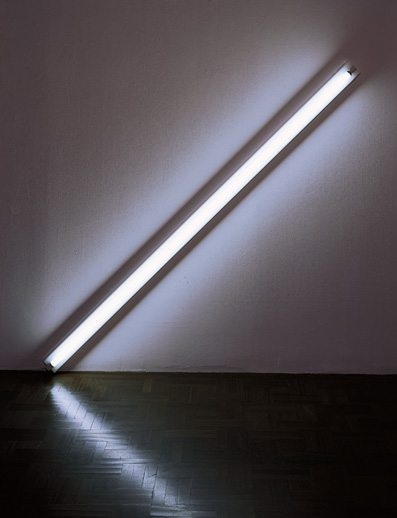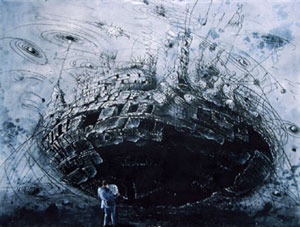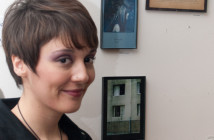The Roundtable is a forum in which the Big RED & Shiny editors discuss issues in contemporary art today. Periodically these discussions result in questions worth further discussion, and this column proposes these ideas and our responses for your consideration. Join the conversation in the comments and ask new questions.
What do you think of the growing trend (especially in New York) of commercial galleries organizing historical shows that rival local museums in terms of breadth and quality?
Matthew Gamber
For galleries looking to emphasize the importance of artists who are outside the grand narrative, this is a way of creating cultural value where it may not exist (or ever exist). For galleries, this creates an opportunity to generate valuable provenance instantly while on the wall. However, this is not to declare all histories created as disengenuous. For artists who undervalued or marginalized, this is a way to show reviewers, patrons, and buyers the importance of valuing such work. There are multiple histories and many of those do not neatly fit into a museum's extant collecting policy. Though, are galleries overlooking an opportunity to create historic shows rather than retrospectives? Would we value Surrealism and Dadaism as much today if they didn't have the romance of such past independent exhibits?
Christian Holland
Hmm, well, Capitalism is as capitalism does. They're trying to make money. Yeah, it'll hurt museums and museums will have to struggle to re-assert their brands as the depositories of all that is worth seeing, but it'll do less harm than recent drops in visitor numbers, endowments and philanthropy. Breadth and quality? Insert cyncial comment here about how all art has ever been driven by is consumerism and therefore these shows will invaribably have better work than museum shows. (This would be hard to prove.) They will, however, stop short of educating us for the sake of education, as museums do; but if more work's being made available because of this new imbalance in the equillibrium of art per square footage of museum, I'm all for it.
Micah Malone
It seems more than problematic in that it might result in the ultimate privatizing of the museum. With so many artist "curated" projects over the last decade that were mostly generated by commercial galleries, it seems natural that more scholarly endeavors would follow suit. On the one hand, projects initiated in commercial spaces don't have as many people to answer to, and can result in more esoteric exhibitions from marginalized artists. Private capital does not have to be accounted for in the same way that state money does. As Benjamin Buchloh recently noted, museums have to pretend to be public, whereas speculative investment must remain exclusive. If responsibility to the "public" must be accounted for in a museum's mission, it makes me wonder what this presentation means. Is it strictly a populist game? If so, is this good for art? I also wonder how many people want public money going to art in the first place. Maybe this privatization of curatorial practice is the new museum model. That would suck.
James Nadeau
Well, I think it is indicative of the breadth and scale of the art world today. While the number of institutions remains fairly static, academic programs are releasing scholars and artists into the system at an ever increasing rate. It seems only natural that these people would find ways to demonstrate their skills. I think that galleries also offer up greater freedom when it comes to putting together an exhibition. Like Micah said above, there tends to be less of a hierachical structure (unlike a museum) so curators and gallerists can be adventurous with their programming. Which can only be good for artists.
I also think this is beneficial from a sales perspective as well. If you are looking to buy art and you see it in the context of a well thought-out group exhibition you are more likely to understand how particular pieces fit into a larger cultural milieu.
We are seeing a further fragmenting of the art world. As institutions stumble financially and can only afford to large blockbuster shows it is up to the gallery spaces to offer up work that challenges the status quo. Inversely this can also hinder by putting work that is perhaps not as skilled into the market just for the sake of being adventurous.
Matt Nash
It seems that academic exhibitions in commercial galleries will offer a diversity of ideas that cannot find a home in the existing museum system. With only so many jobs available for curators, it seems inevitable that some smart people with good ideas will find other outlets for their research and ideas. The commercial gallery system seems like a good fit, because of the ongoing need to situate contemporary work within a broader historical perspective.
That said, it also seems inevitable that the success of a few good historical shows in commercial galleries will create an expectation that all galleries of a certain stature start creating such shows. This could quickly lead to a dulling of the effectiveness and impact of the shows as the quality of the shows decreases, rushed onto the walls with less research and rigor than appropriate, or organized by curators who don't have the necessary vision. This dilution of the historical narrative (and the potential misuse of that narrative to justify commercial ends) would quickly devalue historical shows in all commercial galleries.
What were your favorite exhibitions from 2009?
Mathew Gamber
Damián Ortega: Do It Yourself, up until January 2010 at the ICA. For some artwork, all you need is a small jpeg to represent it on the web. However, in the case of Ortega's work, the jpeg is a teaser for the production it entails. Best of all, I think it is the best exhibit of the year to see in person that you can still visit until next year.
Christian Holland
I'm racking my brain here, but something, perhaps the recession, really hurt art in 2009. Committing to any specific shows, which I was even able to see as I was actually working as a dishwasher in L'Espalier (highest pay) for most of my waking hours for the past year, would do disservice to myself as a gentleman of taste. My favorite artists in Boston, who I can't count as close friends (or technically even drinking buddies, but I'd like to look into changing that) , who've had shows over the last year are Dirk Adams, Christy Georg, Steve Locke and Liz Nofziger, so their shows are and will have been my favorite shows of 2009.
Micah Malone
Patrick Rock's exhibition at Ditch Projects in Springfield, OR Face it, Your Hippies was my favorite exhibition of the year. It involved halving the large gallery space with an overall white and black design, the black side a punk-rock stage where Rock's band Piss played during opening night. A sampling of the Piss song "Empathy" goes something like this: "See the dead rabbit on the road/do you want to fuck it?" The opposite side of this overt punk-rock antagonism was a pristinely painted white gallery, representing the more wholesome hippy variety of "dropping out." Fake LSD tabs were framed on the wall as fine-art drawings and a makeshift fountain bubbling with "Electric Kool-Aid", made from a plastic coy pond submerged in dirt and painted white, occupied the space. The week preceding opening night, Rock lived in the basement of the gallery and blew things up, drank and smoked with blow-up dolls, and apparently, constructed "a physical manifesto of Oregonian identity designed to turn the viewer into salt at a single glance." Punk and hippy culture never felt so comfortable together, but yet, so uncomforting.
James Nadeau
Hands down, Francis Bacon at the Met was one of the most amazing shows I have seen in a long time.
Matt Nash
This past year I have been very focused on my own work, so most of the exhibitions that have held my attention have been historical shows. The two that stood out the best for me were the Julia Margaret Cameron exhibition "For By Best Beloved Sister Mia" at the Portland Art Museum, and "First Hand: Civil War Era Drawings from the Becker Collection" at the McMullen Museum.
The other project that I keep finding myself telling people about, and that keeps me excited about the possibilities of art, was Chris Tonelli & Andi Sutton's "Affects Of Gravity" at the Topsfield Fair. This intervention inside a midway ride was a funny and thrilling way to experience poetry and art.
Image via Google.




